Amid Trauma, Black Americans Are Choosing to Heal
This story contains discussion of suicide. If you or someone you know is struggling with suicidal thoughts, call the 988 Suicide and Crisis Lifeline.
CHICAGO — As they sat on the two chairs in Courtney G. Smith’s living room, they bounced between laughter and deep thought. For at least an hour, they contemplated how past traumas still occasionally catch them off guard, somehow managing to always return to optimism.
It wasn’t until just after 12:30 p.m. when the session started. By now, Smith’s client had hopped up on what looked like a massage table and was laying on her back.
“Do you want jazz or meditation music?” Smith asked.
“Meditation,” her client replied softly, her belly rising and falling with slow, deep breaths.
“On the inhales, set your intentions,” Smith said. “On the exhales, release what no longer serves you.”
With the music set, the crystals nearby, and Cujo, her Shih Tzu, resting quietly a few feet away, the reiki began.
It’s an ancient Japanese form of energy healing. On the surface, it can help with stress reduction and relaxation. On a deeper level, its practitioners say it can help improve mental, emotional, spiritual, and physical issues.
Smith, now 45 and a reiki practitioner, is among a growing number of Black Americans taking alternative routes to healing in a health care system burdened by disparities. Some are embracing more traditional medical approaches and adding more holistic wellness to their practices. Others are pushing even harder against the grain, fighting mental health stigmas and championing alternative healing forms like energy work.
They’re combatting health inequities like the rising number of suicides and ballooning rates of chronic illness. In recent years, more Black Americans seem to be open to alternative ways of addressing ailments, according to Smith and others. From arts as creative expression to yoga and church sermons, they’re searching for ways to heal, and in the midst, discovering it’s hard to pull physical, mental, emotional, and spiritual wellness apart. They work as a unit, experts say.
Many are hurting, and they’re looking for sustainable, supportive solutions. In the process, they’re discovering how interconnected each aspect of their health is. It’s complex and deeply personal work.
Here are some of their stories:
When art becomes medicine
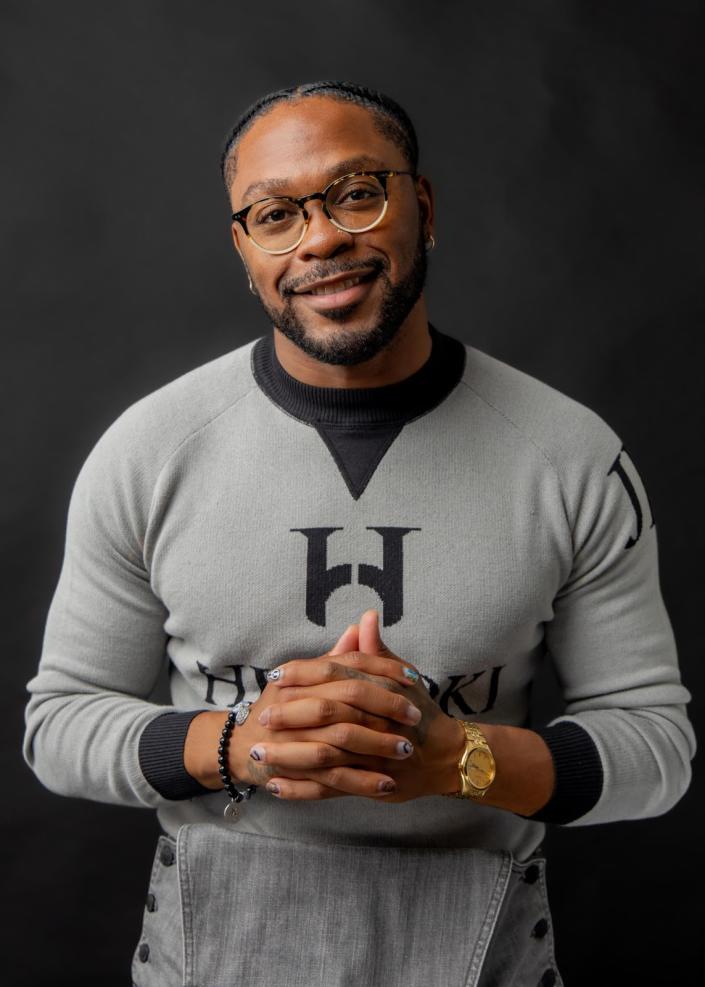
As his pain bubbles, uninvited, to the surface, Jaquial Durham begins to create. Tunnel vision takes over and makes way for documentaries and dissertations. Films and fashion. The art now markers in his journey, records of experiences and emotions that tell the stories of his past.
There was the documentary that was a narrative between him and his once-incarcerated father. And, the upcoming dissertation that digs into his mother’s family history in Clemson, South Carolina, where he was born and raised.
Art helps him process big emotions, and so does therapy.
In the midst of his sessions, the 30-year-old creative producer and community organizer thinks of his three kids. The more he goes to therapy, the more he says he realizes it’s less about him and more about not laying out what he calls a red carpet of trauma for his kids.
He uses art as a creator and consumer.
Without Killer Mike’s last album, Michael, he wouldn’t be here. “That album truly saved my life,” he said. Few were talking about love, mothers, marriage, children, shortcomings, failures, or grace the way that album did.
Within it, Durham saw himself and a lot of what it means to be a Black man in America. There was a shared pain and common struggle reflected back. Through music, he found connection. He loves that Killer Mike is vulnerable enough to cry during interviews.
Durham sometimes tears up watching.
Sunday sermons and Wednesday baths without his phone ground him.
Through hip-hop, church, therapy, and art, he has discovered somewhat of a blueprint for navigating his life. He knows when he’s overwhelmed and needs 30 minutes to an hour to pull himself together. He knows exactly what sermon to watch, depending on what he’s feeling. He knows exactly what album to turn on.
He knows what to grab, what to hold onto for the moment, until the dust settles. Healing, he says, is less about never experiencing negative emotions but rather more about learning to better manage them.
He has spent a lot of time grieving, losing friends and family, and navigating high and low tides.
“I’m just now getting there,” he said. “Now, I’m healing.”
The AfroYogaQueen’s pain remedy
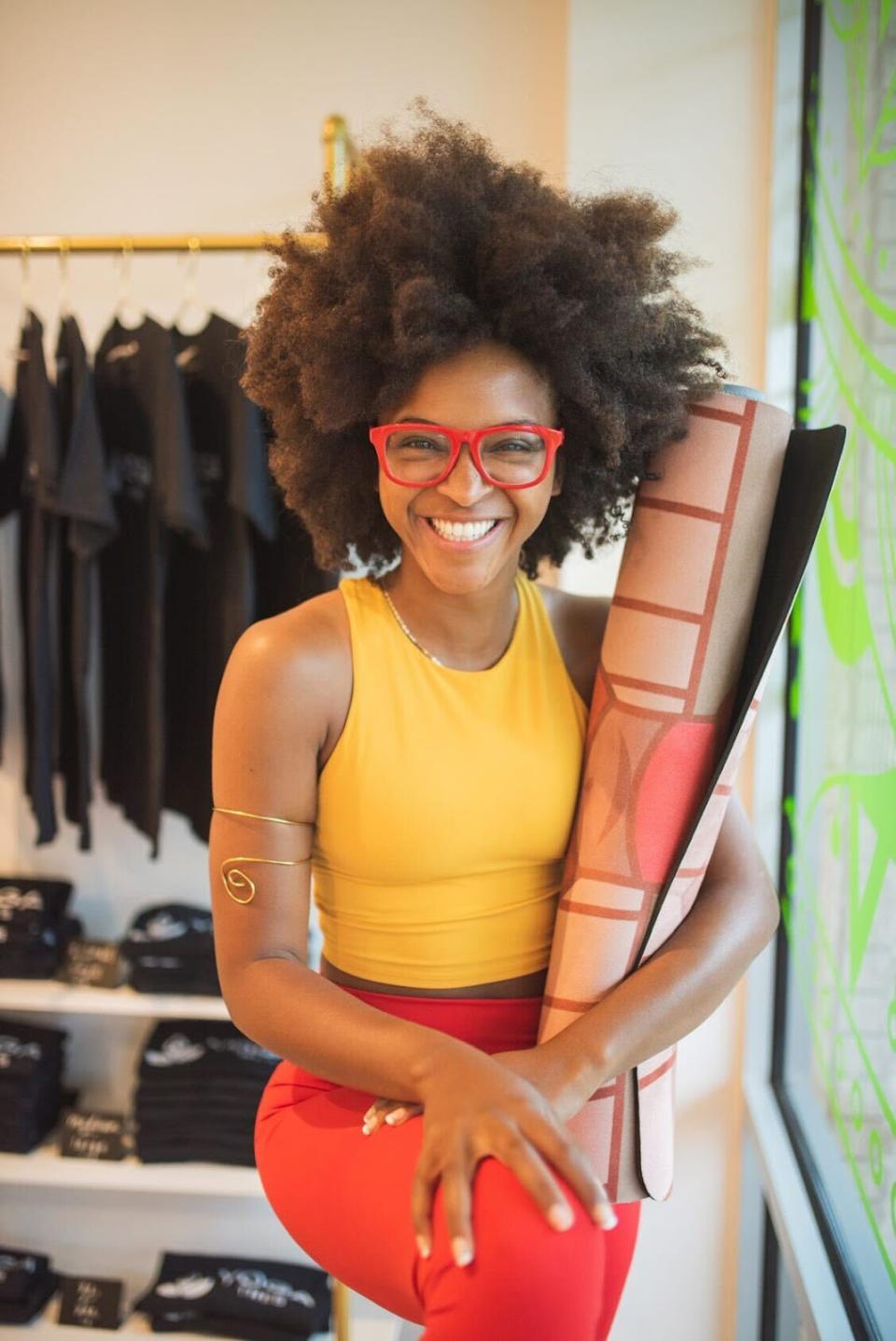
She was so tired that she’d lashed out over small inconveniences. She’d notice aches and pains, only to dull them with Tylenol and ibuprofen. Cramps would force Alicia Dugar Stephenson to stop, stretch, and slow down.
“Those whispers from my body would get louder and louder,” she said.
She had graduated sixth in her high school class, was accepted to Rice University — often called the Harvard of the South — and was on route to a corporate career in engineering, when it all came to a halt.
One morning in 2009, she woke up and everything was blurry. When she walked, stepping on the floor felt like pins and needles were shooting up her legs. Her whole face was puffy.
That’s when her parents rushed her to the doctor. At 19 years old, Stephenson was diagnosed with lupus.
Throughout her treatment, she’d oscillate between pain and numbness, she said. “They were prescribing me everything but the narcotics.”
It felt lonely and like rock bottom, she said. Feeling so fragile forced her to look at her life differently. She noticed that when she moved her body, her symptoms improved. Yoga offered a space to get out of her head and sink into her body. Distractions were shut off on the mat. It was as if a microphone was being held up against her frame.
What did her body need? Where was she holding tension? How could she let go?
Stephenson, 33, went from eight pills a day to none. The doctors didn’t understand why her numbers changed, and others noticed her positive change in demeanor.
“Healing is feeling, addressing, and acknowledging,” she said. “So much of our culture is built around distraction.”
She sees yoga as a way to shift culture. The work she does now, under the name AfroYogaQueen on social media, trains yoga teachers around the world so they can then go on to teach others how to better care for their bodies.
“A lot of people feel isolated because pain is not something we openly discuss,” she says. “When people are hurting, they don’t want to impose their pain on other people.”
She is building a program that aims to scientifically measure the benefits of yoga and meditation, using data points like blood pressure. Soon, she’ll post a series related to pain on YouTube.
She hopes more people will choose to release the stress that’s causing their jaws to clench and bellies to tense up. How can we soften and let go of overwhelming feelings that are leading to backups and blockages?
“Healed people, heal people.”
Pharmacist preaches wellness in the pulpit
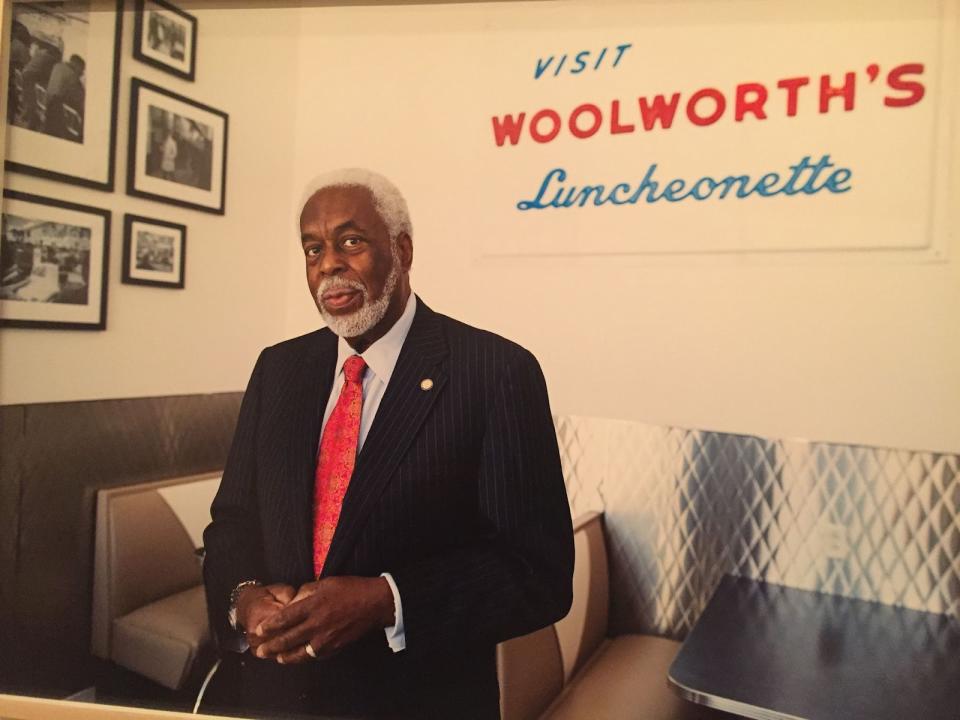
A pastor and pharmacist, Leonard Edloe has spent decades in the spaces where mind, body, and spirit so delicately intertwine.
He’s 76 now, and spent more than 50 of those years caring for patients in the pharmacy and another good chunk of the time sharing sermons from the pulpit. Both, arenas devoted to wellness.
“Some ministers even call the pharmacy a church,” he said. “Whatever your problem was, you could come there.”
His father had purchased a pharmacy in 1945. Edloe joined him in 1970.
In the years that followed, he opened multiple new pharmacies and could always see the pain in those who visited. In his Virginia church, he could always tell when his messages were shaking up the congregation.
“The best examples for my sermons used to come from the pharmacy,” said Edloe. “The people who came to the pharmacy needed Jesus.”
It wasn’t until he went back to school and got his master’s in theology that he learned about trauma. I could’ve used this my whole career as a pharmacist, he thought, and I definitely could have used it in the church.
In 1972, Eldoe’s father died of a massive heart attack after a day at work. And in the years that followed, his sister died of the same at 60. Then, his brother at 54.
He sold his pharmacies in 2012; however, he continues to practice.
He’s always felt the church should serve a greater role in health. The Bible spells it out, he said. The first chapter outlines how we should eat. In the second, Adam is working the garden in what Edloe sees as exercise.
In many ways, his presence bridges gaps between the physical and spiritual. For a terminally-ill pancreatic cancer patient, that meant driving up to Johns Hopkins in Baltimore to be one of the first people she saw after surgery.
Other times, he’s met with more resistance. Nothing he studied could have prepared him for the moment he arrived at the nursing home and the brother cussed about why he didn’t want to see the damn pastor.
“It’s not just physical,” he said. “It’s spiritual.
One medical doctor’s holistic approach
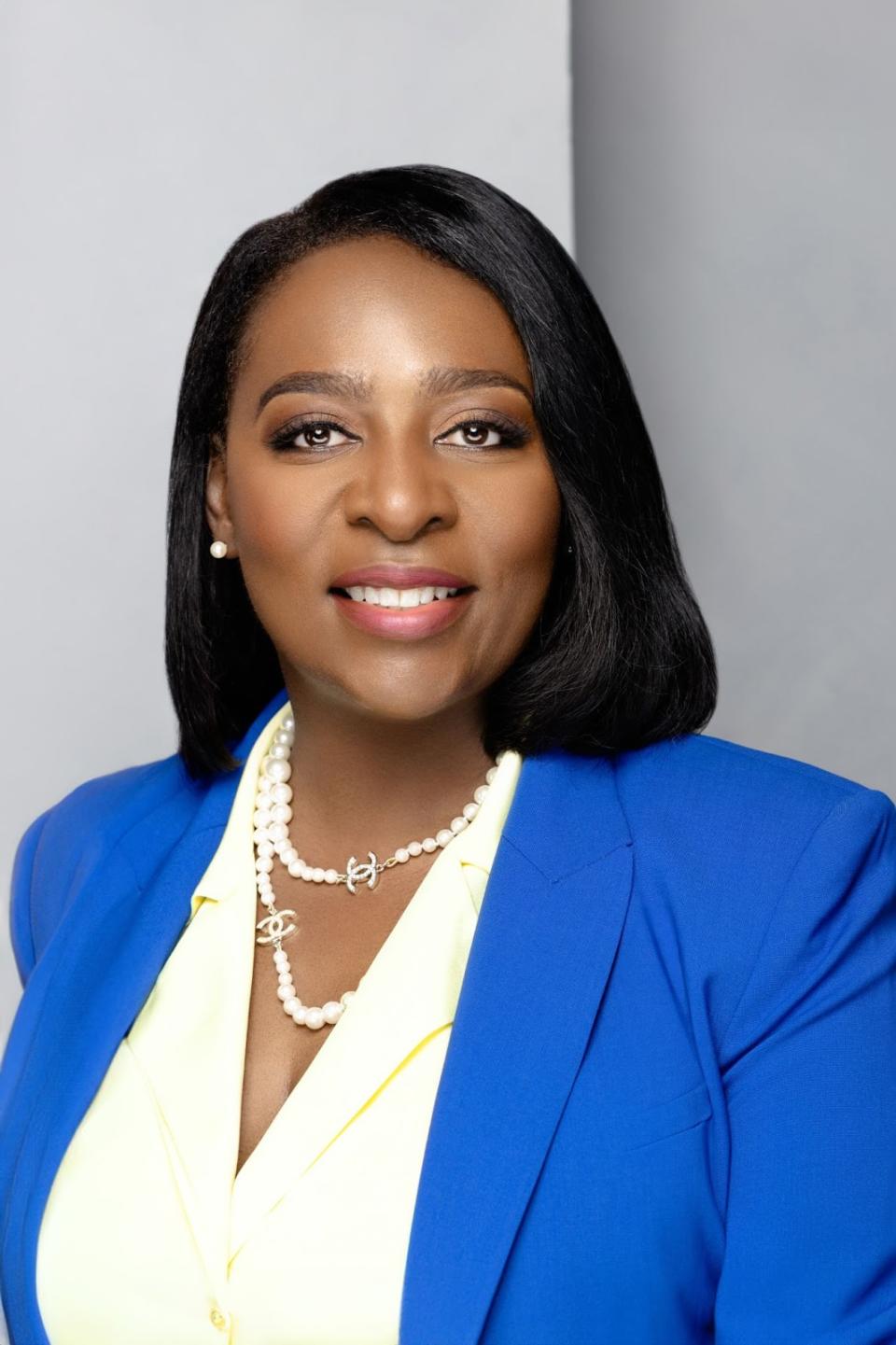
When Dr. Yolanda Lawson first opened her women’s health care office in Dallas, she wanted to be sure the environment felt healing as patients entered. So, she incorporated art and stones into the decor and was intentional about using specific wood and special fabrics.
She wanted to make the gynecologist office, named MadeWell, warm and inviting. It was designed to reduce patient anxiety, and with that came an understanding that emotional wellness affects physical wellness.
“We’ve heard it forever. Mind, body, and soul, but how do you incorporate all of that?” she said. “Many times it’s more than the medication I provide or the surgery I can perform.”
Lawson, the president of the National Medical Association, is often thinking about holistic health and how to consider broader aspects of well-being in more traditional spaces, like hospitals.
She thinks of patients who have long hospital stays. Sometimes, in her field, pregnant people have to stay in hospitals for months on bed rest waiting to deliver. It can feel isolating. In response, facilities are incorporating recreational therapies for patients and their families.
There are in-house art programs and knitting groups where people can make socks for babies. There’s music therapy on cancer and operating floors, where harpists and pianists come in to play melodies and, as a result, reduce angst. There’s aromatherapy and dogs waiting to give cuddles.
Many hospitals have chapels, chaplain services, and meditation rooms, Lawson said. And at children’s hospitals, there are often play therapists who give the kids someone to have fun with in the midst of their treatments. It all supports mental, spiritual and emotional health, she said. Cancer patients, for example, fare better when they go into treatment with a positive attitude.
“Sometimes,” she said, “I see a physical manifestation when I’m integrating other therapies that are less traditional.”
To Lawson, healing is multimodal.
When the healed becomes the healer
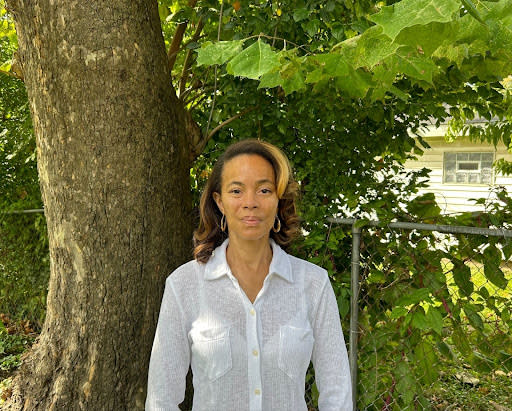
In 2014, Courtney G. Smith stopped working, stopped taking her medications, stopped socializing and going out. She quit almost everything, but Bikram yoga several times a week was the only activity she stuck with.
Her chronic pain was pushing her to contemplate suicide. At the time, her life insurance was paused and she didn’t want her mother to have to bury her only child without money, so she called to make sure the policy would still pay out.
When the agent picked up, she was so happy to hear Smith’s voice that it stopped her in her tracks.
“I didn’t have it in me to ask her on that day.”
She remembers hanging up and telling herself that if she wasn’t going to go through with taking her own life, then she needed to figure out how to get through. So, she wanted quietness, stillness, and space to listen to her body.
What needs to heal?
It wasn’t until the next year that she approached about doing reiki training. She hesitated at first, but ultimately surrendered when Smith’s good friend and mentor said she saw the healer in her.
Damn, Smith thought, when someone says that, you have to honor it.
About eight years later, in her Chicago home, Smith held her hands on the client’s shoulders, and over the next hour, she moved from the client’s eyes to her feet, pausing over specific chakras.
When the soft alarm chimes go off, the session ends and Smith grabs her clipboard to quickly jot down notes, remembering all that came up. Later, she’ll type it all up into a digital report.
Among prior clients, she said she’s cleared lung inflammation and helped reduce the blood pressure of a mother who was in the intensive care unit after delivering her baby.
It took years for Smith to trace her own chronic pain back to a sexual assault from the winter of 2002. Facing it helped her release the pain, both mental and physical.
“Unless you really deal with the trauma,” she said, “you’re not going to heal.”
She thinks community healing for Black folks is going to be slow, given the sheer amount of trauma. One person at a time. One room at a time.
Her goal is to make as many people reiki practitioners as possible. “That is where the real change and shift happens.”
I’d love to hear from you, dear readers. What does healing mean to you? What has it looked like for you? Has it been mental, physical, emotional or spiritual? How have you found healing in 2023? In what ways are you looking to heal in 2024? Or maybe, you’ve struggled to find healing, what has that journey looked like? My inbox is always open. I’m looking forward to hearing from you at margo.snipe@capitalbnews.org.
The post Amid Trauma, Black Americans Are Choosing to Heal appeared first on Capital B News.

